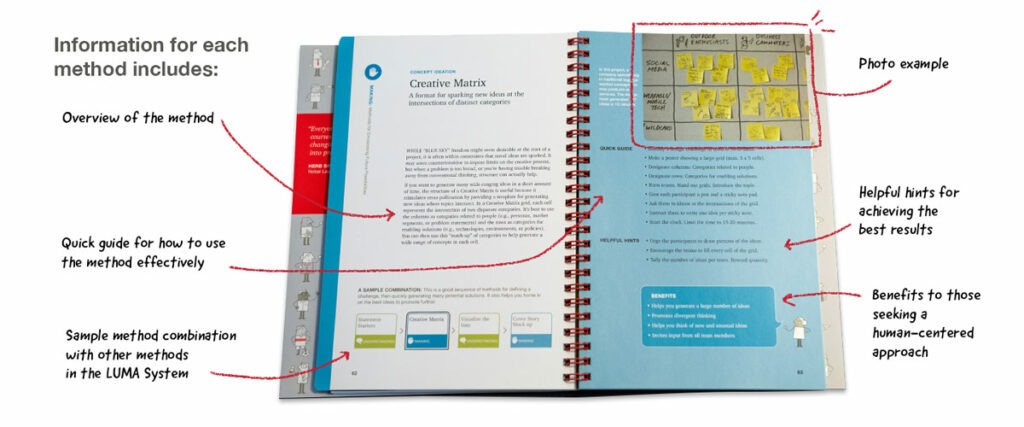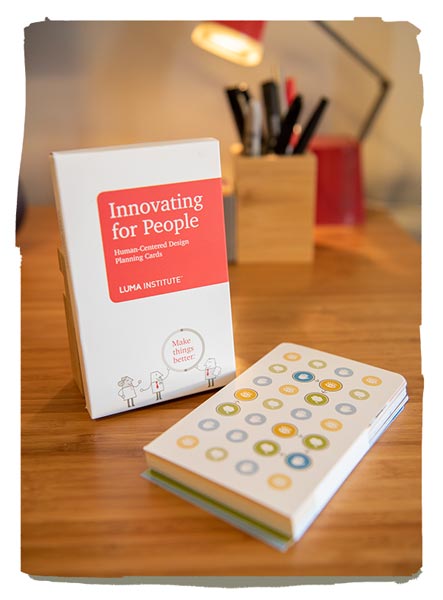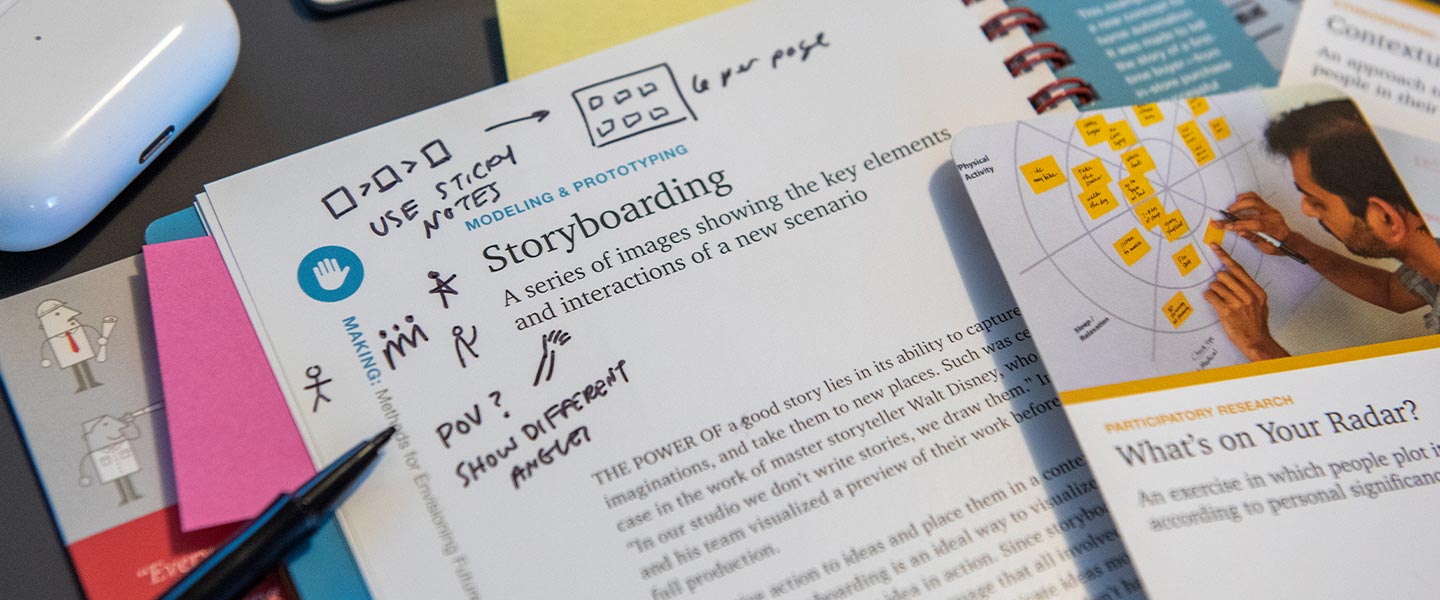Innovating for People Handbook
If you’re like me, you still enjoy picking up a book and flipping through the pages. Sure, you can find anything on the internet, but it’s still hard to replicate the feeling of holding a book in your hands.
When the co-founders of LUMA Institute introduced a new approach to human-centered design — as a system, not a process — they needed a way to share it with everyone. The result was a book: “Innovating For People: Handbook of Human-Centered Design Methods,” first published in 2012. I recently interviewed one of the authors, Bill Lucas. He described their intentions by saying, “Our aim was to create a resource that was attractive, accessible, and actionable.”
Now, tens of thousands of copies are being used worldwide. We’ve seen tattered covers, annotated margins, and dog-eared pages — and we love that! The handbook is intended to be used as a ready reference in everyday work, whether you’re collaborating online or in-person.
“Innovating for People” is your guide to all 36 human-centered design methods in the LUMA System, organized by way of three key design skills: Looking, Understanding, and Making. The 86-page, spiral-bound volume provides information about every method and includes:
- An overview and description of the method.
- A photo of the method in use.
- A quick guide for how to use the method effectively.
- Helpful hints for achieving the best results.
- The method’s benefits to those seeking a human-centered approach.
- Examples of how each method can be used in combination with other methods.

I keep my copy near my desk and rely on it for facilitation tips when I’m planning design sessions. I also use it as a source of inspiration when creating design recipes (i.e. combinations of methods that help me accomplish a task). My copy is full of handwritten scribbles, little sketches, and sticky notes.
These days, more and more things are becoming digital — which makes them more accessible but less tangible. For instance, we recently published all 36 methods in the LUMA System on luma-institute.com. Anyone in the world with an internet connection can freely explore the methods! That’s totally aligned with our goal of equipping more people to be confident and capable designers. At the same time, there is a special kind of joy associated with getting a package in the mail, pulling a book off the shelf, and embracing a well-designed physical object. If that sounds appealing to you, consider getting a hard copy of the handbook. Plus, you can write in the margins. In fact, we encourage it!
At LUMA, we believe in “making things better.” In the epilogue to the book, it says that “innovation is an essential act of progress.” Maybe you think of yourself as an innovator, maybe not. But I would bet that nearly everyone reading this post is trying to improve something — a process, a product, an experience…
As we teach in our workshops, the discipline of human-centered design calls on us to look carefully at the world around us, so that we might understand it deeply, and make things that are feasible, viable, and desirable. If you already practice these skills, or desire to learn them, then count yourself as a designer — and part of the growing community of LUMA design enthusiasts.
Preview the handbook: Sample the first section of the book by downloading a PDF of the Looking methods. These 12 methods help you observe the human experience and are further divided into three subcategories: ethnographic research, participatory research, and evaluative research.

Human-Centered Design Planning Cards
To complement the handbook, LUMA also developed a deck of human-centered design planning cards. The deck offers one pocket-sized card (5” x 3”) for each of the 36 methods in the LUMA System. Each card has a photo of the method in use, a short description, a quick guide, and helpful hints.
I keep a short stack of cards on my desk – one for each method that I use most frequently. Like many people, I don’t use all 36 methods all the time, so I just keep my favorite methods nearby.
I also use the cards to build design recipes by laying them out on a table and rearranging them until I find a sequence that makes sense for the task at hand. Sometimes I can think more clearly when I’m working with physical objects and this card sorting exercise has worked for me dozens of times.
Pick up a deck of the planning cards today. It’s your turn to deal!
You can always find information about the book and cards on our website.
Giveaway
To celebrate the book, we’re announcing a giveaway! To be entered to win one free copy of the handbook and a set of our planning cards, tell us how you’d use these tools or tag a friend in the comments on our social media posts about this blog article:

